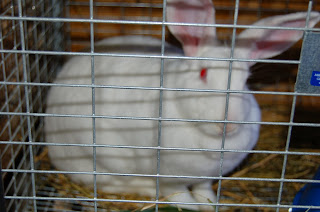Tomato Pasta Sauce
Posted by Cris
We love our fresh tomatos all summer, but then they all come at once so we blanch them (quick 10 secs in boiling water), peel the skins and core them and freeze them in bulk.
And then hunting season comes and I start cooking. Only this year Jon didn't go up nort' so he helped!
Ingredients
Tomatoes
Zucchini (or squash)
Onions
Garlic
Basil
Salt and Pepper
I would love to give you exact amounts and all so you could replicate this, but that's not how I cook. I had 4 big gallon ziploc bags of tomatoes, 6 cups of zucchini (measured pre-frozen) and 1 onion and LOTS of garlic (10-14 cloves) basil and salt and pepper are to taste.
Here are the steps - defrost (it took a good 24 hours for those tomatoes)
Chop and Saute the onion and garlic.
Add the garlic and onions to the slow cooker.
Add BASIL (I love basil! check out pesto here!) I rescued this tiny plant from the garden and its now on my kitchen windowsill for fresh basil all year long. I also have a lot of dried basil. Both work great.
Zucchini is not the most common ingredient in tomato sauce, but we always have a lot of excess that I shred and freeze in 2 cup portions. *Why 2 cups? It's the right amount for zucchini muffins. The reason I add it is to thicken the sauce and add some extra vitamins and vegetables - what the kids (and hubs) don't know won't hurt them.
So when it thaws there is a LOT of excess water. Since we are trying to thicken the sauce that needs drained off. I put all of it into a cheese cloth.
Wrap it up and strain. It's really easy.
Okay - so that goes into the slow cooker too. Mix it all up. Let it cook on low for 6-8 hours or high for 4 hours. Taste it throughout and add salt and pepper. If it tastes bitter, you can add carrots (shredded or cooked/mashed) to sweeten things up. I had to do this last year, but this year it was fabulous without.
When all done cooking its still very chunky. We like our tomato sauce well pureed - so we put it in a blender and puree away.
You can certainly eat this right away or store in the fridge for a few weeks.
We went ahead and added to jars and started the canning process!
You need to leave a 1/2 inch of head space.
Its a water bath process - which I think is easier than pressure cooking, but whatever.
They have to stay in there for 35 minutes.
And when it was all done we have 12 jars of beautiful homemade Tomato Pasta Sauce.
PS - Also amazing as PIZZA sauce.



























































